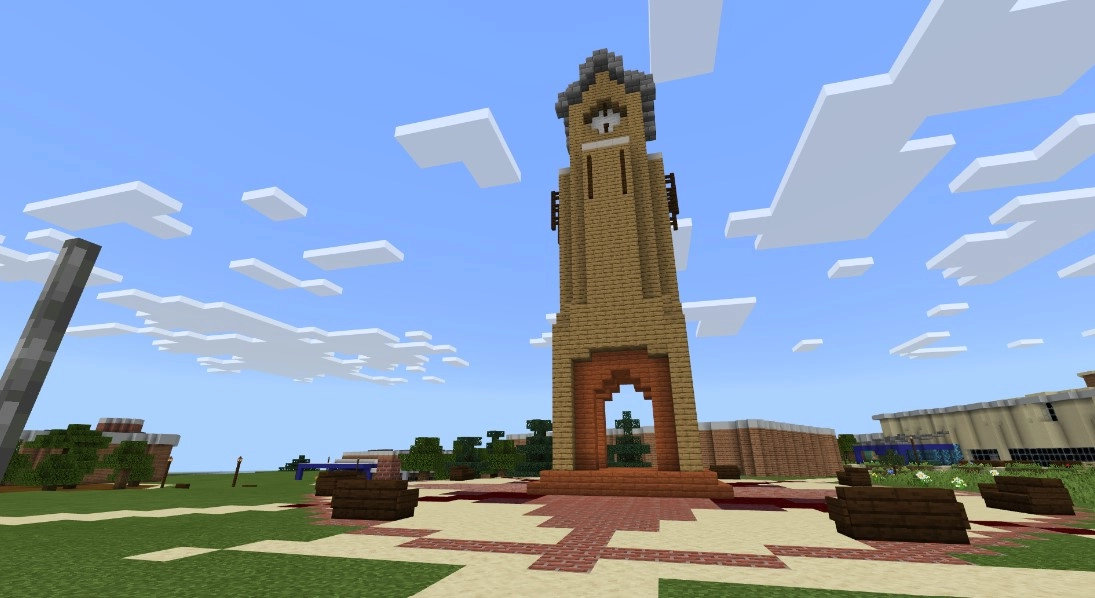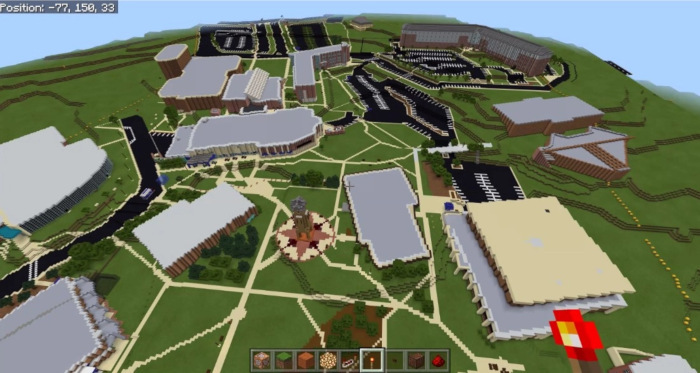How Colleges are Using Minecraft to Create Events and Activities
Higher ed institutions have discovered the value of Minecraft to bridge gaps brought on by remote learning

When the pandemic began, the leaders at Columbus State University in Georgia explored various platforms to see how they could better engage their students, particularly incoming freshmen. “We traditionally bring freshmen to a campground for an extended orientation we call PROWL,” says Mariko Izumi, Ph.D., professor of communication and director of the Center for Experiential Learning and Career Design. “It stands for Pride, Relationships, Opportunities, Wisdom, and Leadership.”
During PROWL, second-, third-, and fourth-year students lead incoming students in activities that help them create bonds. The event focuses on social-emotional learning rather than logistics. “If you become friends with people, you are less likely to drop out,” says Izumi.
Could the college figure out how to hold PROWL in a virtual world?
Yes, thanks to Minecraft Education.
The free education version of the popular building game allowed Columbus State to create a safe and inclusive space for students. By adding in the communication channel Discord, students were able to use voice chat and share screens.
Over 15 weeks, a group of computer science students built a Minecraft version of the institution. They used typography maps from the city and made it as realistic as possible. “We wanted incoming students to have a realistic simulation so we spent time on corners, windows, and doors,” says Izumi.
To recreate the face-to-face aspect of PROWL, a group of five computer science faculty members designed interactive activities inside the platform. Held for three days at the beginning of August, 30 freshmen and 20 new faculty members participated. They “walked” through campus and collaborated to solve various problems, such as creating an ideal classroom and helping a roommate who wasn’t leaving the room or going to class. Throughout the event, faculty and students got to know one another, learn about the campus culture, and explore campus resources.
Tech & Learning Newsletter
Tools and ideas to transform education. Sign up below.
“The point of PROWL is to spend time together beyond the surface level. It’s harder in a virtual setting but we’re proud of what we created,” says Izumi.
Columbus State’s admissions department may use the Minecraft world for recruiting and campus tours, she says. Izumi also plans to offer Minecraft PROWL next summer, so she and her team have begun building the inside of buildings.
- What is Minecraft: Education Edition?
- Minecraft: Education Edition Tips and Tricks for Teachers
- What is Esports and How Does it Work in Education?

Universal accessibility
Other higher ed institutions have discovered the value of Minecraft, too. The University of La Verne in California, for example, used Minecraft to hold debate practices. Colin Coppock, a junior and president of the Lordsburg Debate Union, says the team began building a Minecraft village for fun when COVID-19 first hit, and then they realized it might be even more useful.
“We found a program called Yaatly, which hosts online debates and has speaking times set in place,” Coppock says. “Having physical avatars of friends in the Minecraft world made it easier for many of us to engage in online debate.”
According to Coppock, the combination of Minecraft and Yaatly helped the team immensely. “We had improved discussions and our debates were much better than they would’ve been in a faceless void. When it wasn’t your speech, you could move your avatar around the debate hall, thinking of ways to improve it aesthetically, such as adding trap doors or flower pots.”
At Brown University in Rhode Island, the student online gaming group, BEST, opened its Minecraft campus in March and invited students, alumni, faculty, and staff to add details to the exteriors of each building and create interiors. Nearly 70 people have participated, helping to create a sense of community even though they are all working remotely.
“One of the things we are focusing on is making sure it’s in a ready state for admissions tours,” says Griffin Beels, a senior and co-president of BEST. “With in-person tours unavailable, it’s important to have another medium—especially one that improves on the virtual tour, giving people the autonomy to move around.”
“Minecraft is very accessible,” adds Isaac Kim, an M.D./Ph.D., student at Brown. “You can run it on any device, even mobile.” By the end of August, nearly 200 students had signed up to build or participate.
Moving forward, BEST hopes to host parts of events in Minecraft.
